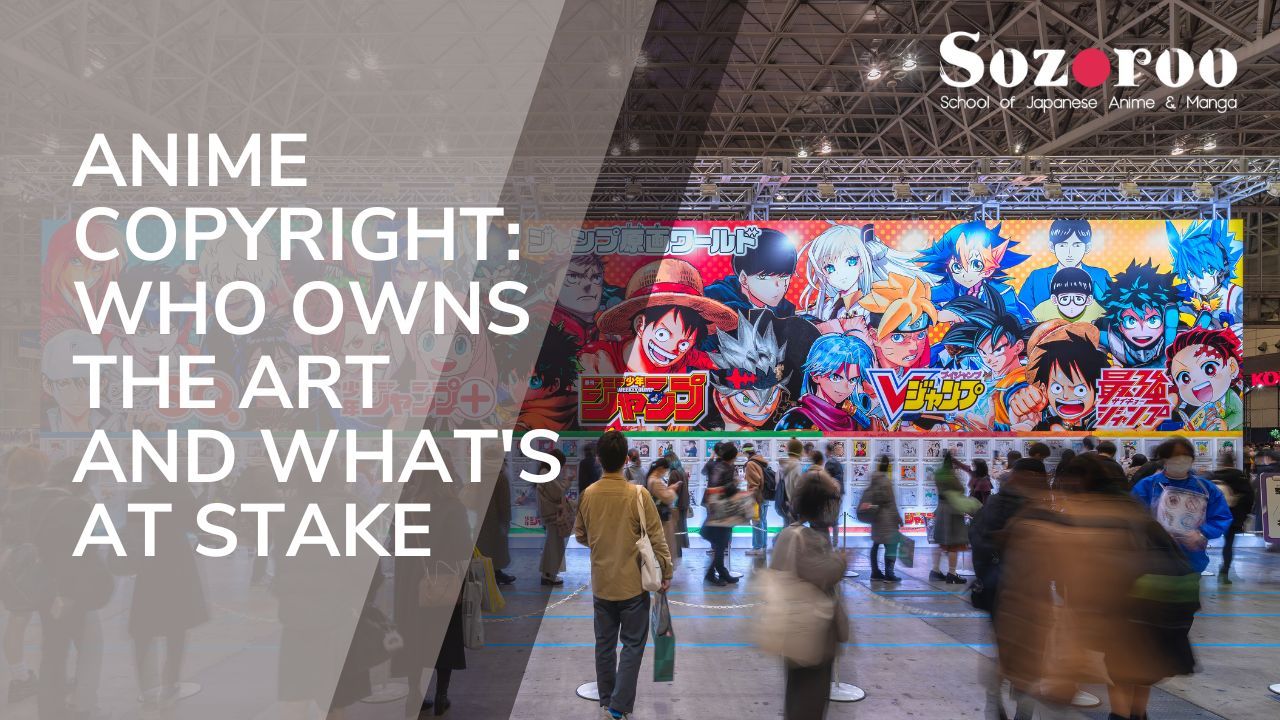
The Anime Copyright Conundrum
Why Animators Got Upset
What This Means for Fans and Creators
The World of Social Media and Rules
Recently, a big debate broke out in the world of manga artists and animators. It all started when a famous manga artist was shown a collection of their work, and among their own creations they found an illustration of a character they hadn't drawn. This illustration was created by an animator who was involved in the production of the respective anime, and it bears the animator's signature.
The manga artist was quick to voice their concerns, claiming that this act violated the unwritten "rules of artists. The repercussions were immediate, as opinions on the matter from all corners of the industry flooded social media. Should animators who contribute to the creation of an anime be allowed to create character illustrations as gifts for fans, whether it's a paid or unpaid endeavor? On the opposing side were arguments that manga artists have every right to claim ownership of their creations and characters. This controversial debate had far-reaching implications.
Even though the issue itself was resolved after some discussion, it had a big impact on the culture of Japanese manga, anime, and everything related to them.
Why Animators Got Upset
The manga artist's claim was legally correct, but why did it lead to such a heated discussion? It can be summed up as follows: Animators also put a lot of passion into creating works on a daily basis. Even if they are not the original creators, they still have a sense of pride and attachment to the works they have participated in. They were happy that overseas fans appreciated the results of their hard work. Even though it was considered legally inappropriate to draw and sign illustrations of characters from the show, they hoped that this act could be somewhat tolerated.
While it is unknown whether the particular signed illustration was done for free or for a fee, as explained in the section on copyright, the power of the original creator is legally significant. The creator may not have intended it, but the situation struck some as a case of a stronger party exercising its rights in a forceful manner.
Animators without copyrights can sometimes experience feelings of frustration, and their activities may be restricted. For example, even a skilled veteran animator may find it difficult to introduce or exhibit the works in which he or she was involved during interviews or exhibitions. Some even express the shock of feeling as if their existence is being erased in the current state of affairs.
What This Means for Fans and Creators
In addition to being a debate over the rights of manga artists and animators, this issue extends to the broader realm of fanart culture. Drawing character illustrations without copyright is similar to a form of fanart, and the controversy has raised concerns about its impact on this entire culture.
This type of activity falls into a legal gray area. While it may be considered a violation of copyright law if strictly applied, the nature of the offense is such that it will not be prosecuted unless the rights holder decides to take action. As a result, as long as it doesn't cause significant financial or reputational damage, it tends to be tacitly accepted. The discussion of whether this gray area is what supports Japan's fanart culture has been going on for many years and has become a significant point of interest, even in discussions of the non-prosecutable nature of copyright under the TPP agreement.
The World of Social Media and Rules
The balance, including the current use of gray areas, is becoming increasingly difficult in today's society. First, the culture of sharing on global social media platforms is not necessarily compatible with the use of gray areas. Fanart has been tolerated in underground communities where it is less likely to come to the attention of rights holders, but social media culture encourages open sharing.
Rules are getting stricter because the world is getting smaller. What's okay in one place may not be okay in another. Social media doesn't have borders, so people with different rules and laws are talking to each other. In this case, some people said it's okay for an artist to draw at a convention in another country, but not everyone agreed. The fan who showed the illustration may not have known that it would be a problem.
The Internet remembers things forever. Even if it's okay now, it might not be in the future. The signed picture probably wasn't made recently.
If this keeps happening, people might stop doing creative things. It might be better to have clear rules about what's okay and what's not. Some people are trying to make guidelines for creating things based on other things, and some in the anime industry are talking about adding these rules to contracts.
In the future, creators may have more say in what they can do with their work, and that could affect how people make and share art.
Join Sozoroo and Dive into the World of Anime! Enjoy a 7-Day Free Trial!
Start your anime and manga creation journey with our free trial. Ignite your passion, learn from the pros, and take the first step towards your dream career in animation.


